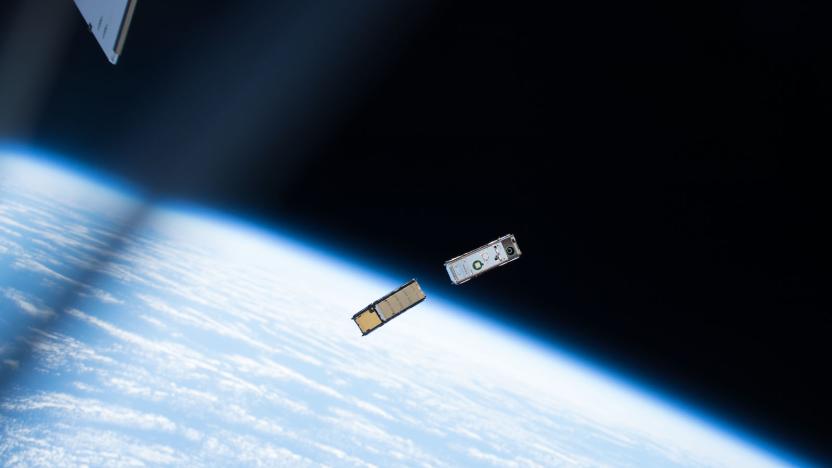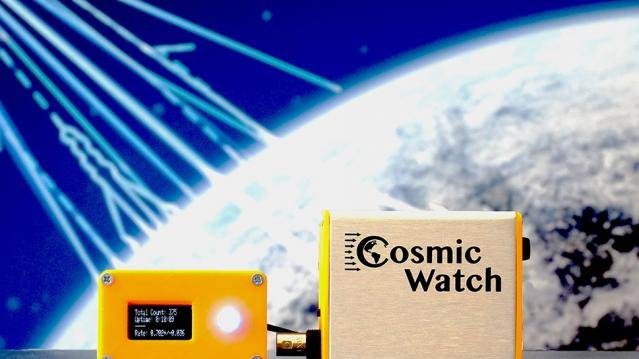IceCube
Latest

A tiny NASA satellite mapped Earth’s atmospheric ice
Last May, NASA launched a small, bread loaf-sized satellite into orbit around Earth. Dubbed IceCube, the satellite's mission was to measure cloud ice in our planet's atmosphere -- a challenging task that researchers have previously only been able to perform in limited ways. Sensing ice clouds requires measurements at a range of frequency bands but particularly within what are known as submillimeter wavelengths, or electromagnetic wavelengths that fall in between those of microwave and infrared waves. The problem is, instruments that can take those kinds of measurements have previously had to be on board high-altitude research aircraft, meaning measurements were limited to the areas where those aircraft were flying. Launching a satellite that can perform those measurements could open up what parts of the atmosphere can be studied, and that's where IceCube comes in.

MIT's DIY muon detector sniffs out cosmic particles
Scientists at MIT have designed a pocket-sized muon detector that can be easily made with common electrical parts, meaning anyone can kit themselves out with legitimately-functional Ghostbusters-esque gear for less than $100. The device detects the charged particles -- muons -- that come from the high-energy cosmic rays blasted from supernovae beyond the solar system. These particles last only a fraction of a second but can be found in every layer of the planet's atmosphere, with some even penetrating the Earth's surface and burrowing into rock and ice.

Visualized: world's largest neutrino observatory rivals Guatemala sinkhole
Without question, one of the images from 2010 will be the insane, almost incomprehensible sinkhole that emerged in Guatemala earlier this year, but this particular shot from the South Pole does an outstanding job of vying for equal attention. Coming directly from the University of Wisconsin-Madison, this is a look into the planet's largest neutrino observatory, which was just completed after half a decade of work with $279 million. The goal? To detect "subatomic particles traveling near the speed of light," and when you have an ice-bound telescope that encompasses a cubic kilometer of Antarctic ice, well... you've high hopes for success. Will this pipe into the underworld finally lead us to understanding Dark Matter? Will century-old mysteries of the universe finally have answers? Even if not, we're envisioning a heck of an entry fee when it's converted into the world's longest firehouse pole and marketed to affluent tourists who make the trip down.

SGI's ICE Cube Air Modular Data Centers can be deployed anywhere, even in the hood
SGI is a shadow of its former self, selling its name to Rackable Systems and appearing in some disgraceful situation comedies. We like to remember the old, harder, edgier SGI, a pioneer in the computer graphics industry when it came straight outta Sunnyvale in the '80s. Now it's back, launching the ICE Cube Air Modular Data Center, capable of housing four racks and expandable up to 80 and a total of 97,920 cores and 143.36PB of storage. Each unit is almost entirely self-sufficient, requiring only power and a supply of water, which can come from a plain old garden hose. Cost starts at $99,000, which isn't cheap, but we went ahead and ordered four. You know how we do it.

IceCube neutrino detector set to image Earth's core
Following the Dr. Dre Medical Clinic and Eazy E Public "[censored]" Library, the final founding member of pioneering gangsta rap group NWA has at last been given his due, with scientists at the South Pole currently putting the finishing touches on an ambitious project known as the IceCube neutrino detector. Consisting of thousands of sensors that will occupy a cubic kilometer of ice upon completion, the machine is being built well below the Pole's surface, and will be used to detect neutrinos from outer space which have been trapped below the Earth's crust. The image that these scattered neutrinos produce over the course of a decade should result in a very accurate silhouette of the core, which will appear as a dark object within the lighter outline of the planet as a whole. Unfortunately, when contacted for comment, team member Maria Gonzalez-Garcia of Barcelona University refused to opine on the merits of the detector, instead cryptically suggesting that we check ourselves before we wreck ourselves. [Image courtesy of UC Berkeley]



